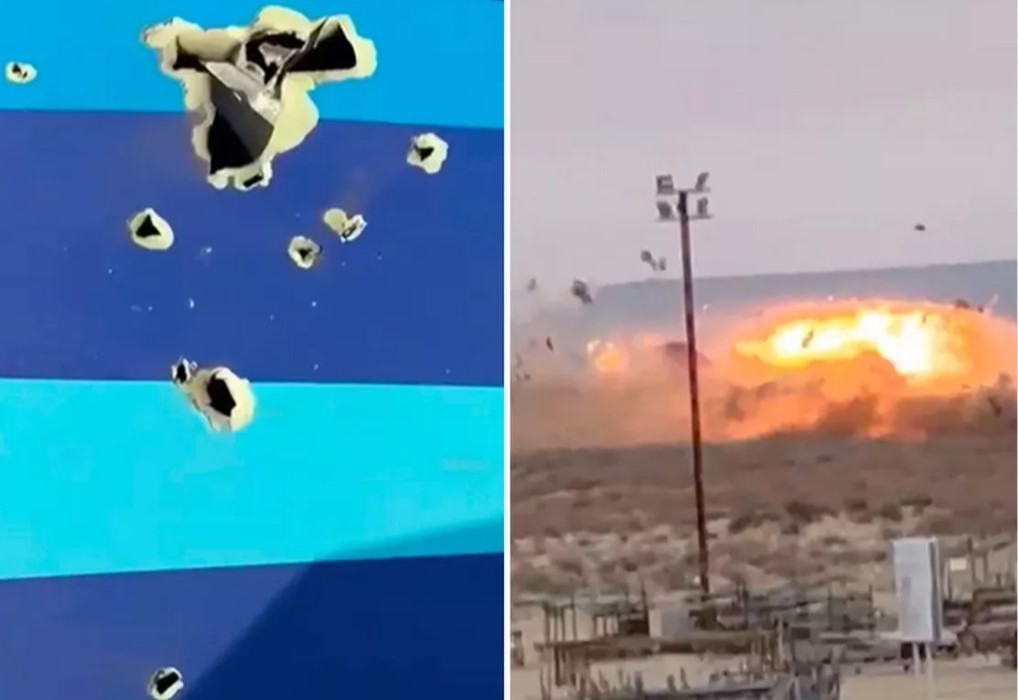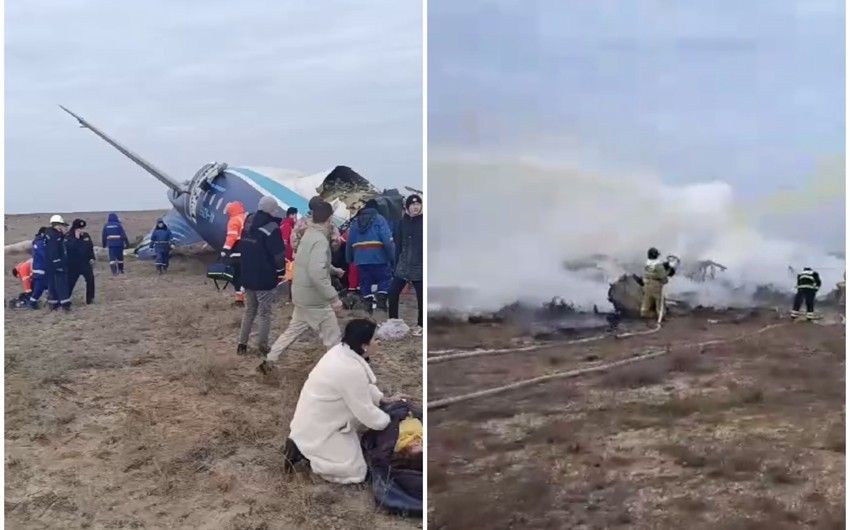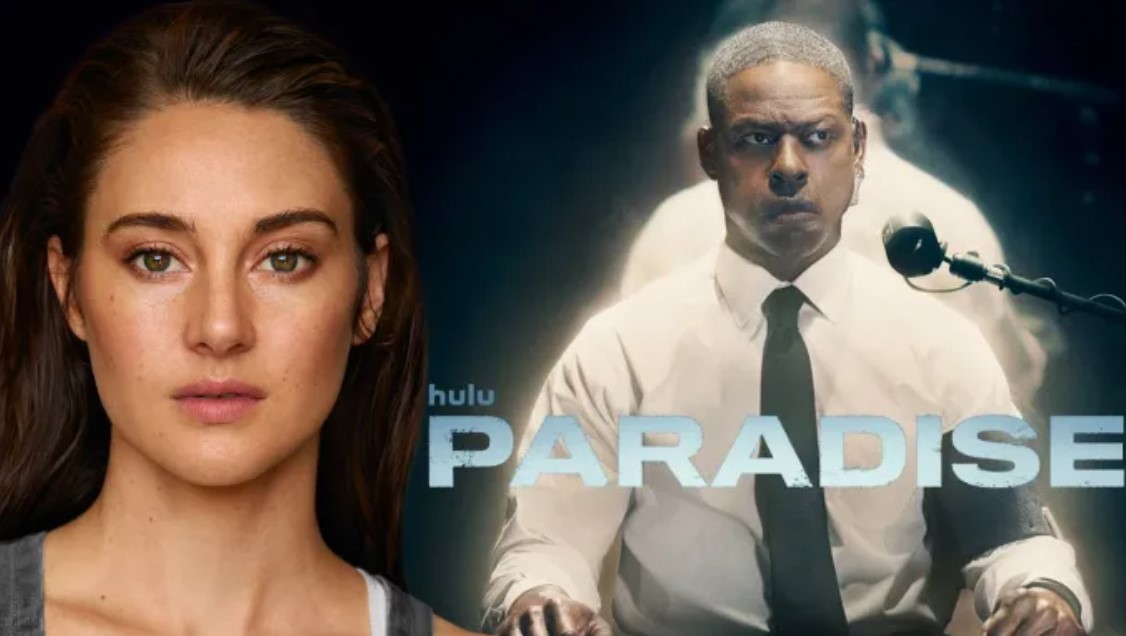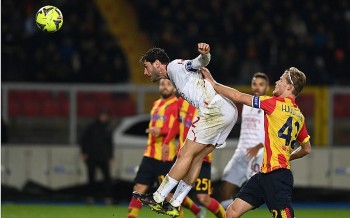What Is The Capital of Russia: History, Facts, Best Places to See
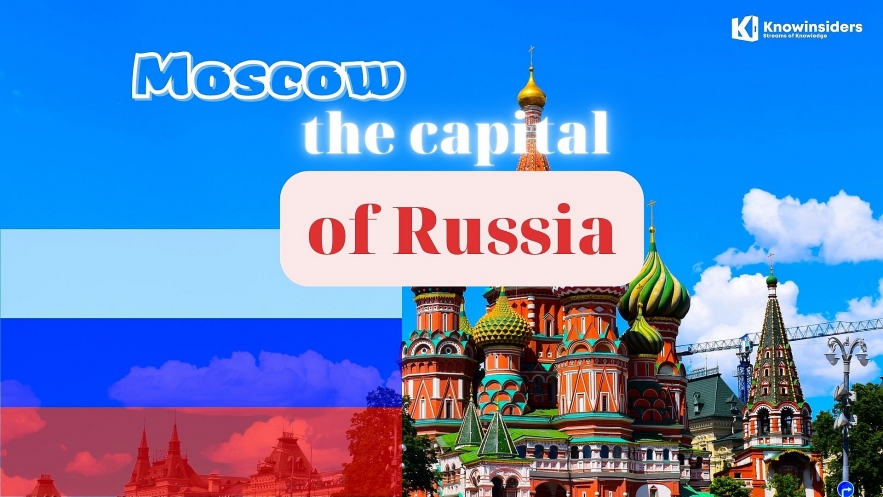 |
| What Is The Capital of Russia: History, Facts, Best Places to See. Photo: knowinsiders. |
What is the Capital of Russia?
The capital of Russia is an incredible place to explore. Visitors to Moscow come away spellbound at all the amazing sights, impressed at the sheer size and grandeur of the city. Lying at the heart of Moscow, the Red Square and the Kremlin are just two of the must-see tourist attractions; they are the historical, political and spiritual heart of the city – and indeed Russia itself.
These are the immortal lines of Pushkin's poem, well known to every citizen of Moscow since school. No matter how often you read them, they never lose their beauty. It is probably the best way to express those feelings that one might have thinking about Moscow.
How much do you know about Moscow? Let’s start with the basics, including history, best places to go and frequently asked questions and facts about the capital of Russia.
*****
History of Moscow
According to expresstorussia, the capital city appeared where the Moscow River meets the Negilinnay River. Archeologists say settlements on the territory of Moscow appeared thousands years ago. According to legends, the great duke Yuri Vladimirivich Dolgoruky invited duke Svyatoslav Igorevich (from "Slovo o polku Igoreve") to the site of current-day Moscow and they had a feast, after which the city was founded.
Moscow opened trade routes to Oka and Volga to everyone from Russia's northern and southern territories, from Ryazan and Smolensk, and between the twelfth and thirteenth centuries Moscow became a dominant city - the symbol of Russian people.
The first Duke of Moscow was Vladimir Vsevolodovich(1194-1228), who inherited Moscow from his father Vsevolod III. He didn't do anything of note.
| Moscow in the twelfth and thirteenth centuries The forefather of the dynasty of Moscow Dukes was a son of Alexander Nevsky - Daniil Alexandrovich. He started to gather piece of land around Moscow. And very soon became the territorial center of Russia. In 1326 the residence of Russian metropolitans (orthodox bishops) was moved from Tver to Moscow - an event of a great importance. There were numerous attacks on Moscow. In 1382 the tatar khan Tohtamysh occupied Moscow. 24 thousand citizens were killed, and the Kremlin was burned to the ground. In 1382 Moscow was destroyed by a fire. Since that time chronicles started mentioning a "Kreml" (Kremlin) which was made out of wood and stone and looked like that until 1485. |
In the 14th century, the grand princes of Muscovy began gathering Russian lands to increase the population and wealth under their rule. The most successful practitioner of this process was Ivan III, the Great (1462-1505), who laid the foundations for a Russian national state. A contemporary of the Tudors and other "new monarchs" in Western Europe, Ivan more than doubled his territories by placing most of north Russia under the rule of Moscow, and he proclaimed his absolute sovereignty over all Russian princes and nobles. Refusing further tribute to the Tartars, Ivan initiated a series of attacks that opened the way for the complete defeat of the declining Golden Horde, now divided into several khanates.
Ivan III was the first Muscovite ruler to use the title of "Tsar", derived from "Caesar", and he viewed Moscow as the Third Rome, the successor of Constantinople, the "New Rome". (Since Rome fell in 410 and the Byzantine Empire in 1453 to the Ottoman Turks, Moscow concluded that it now fell to the "Third Rome" to save Christian civilization.) Ivan competed with his powerful northwestern rival Lithuania for control over some of the semi-independent former principalities of Kievan Rus' in the upper Dnieper and Donets River basins. Through the defections of some princes, border skirmishes, and a long, inconclusive war with Lithuania that ended only in 1503, Ivan III was able to push westward, and Muscovy tripled in size under his rule.
Internal consolidation accompanied this outward expansion of the state. By the 15th century, the rulers of Moscow considered the entire Russian territory their collective property. Various semi-independent princes still claimed specific territories, but Ivan III forced the lesser princes to acknowledge the grand prince of Muscovy and his descendants as unquestioned rulers, with control over military, judicial, and foreign affairs. Gradually, the Muscovite ruler emerged as a powerful, autocratic ruler - a tsar.
According to introducingmoscow, when Peter the Great founded the Russian Empire in 1712 and made Saint Petersburg its capital, Moscow was suddenly relegated to second place and population quickly declined. However, over the ensuing century, the city's infrastructure was built up and connections to the capital were created. When Napoleon invaded in 1812, Moscow's inhabitants were evacuated, but not before allegedly setting fire to the city to sabotage the French forces. The city's destruction was claimed as a great success by the Muscovites, and it was quickly rebuilt afterwards: Moscow State University was founded, the Bolshoi Theatre was built, and any number of monuments celebrating the city's victory were put up.
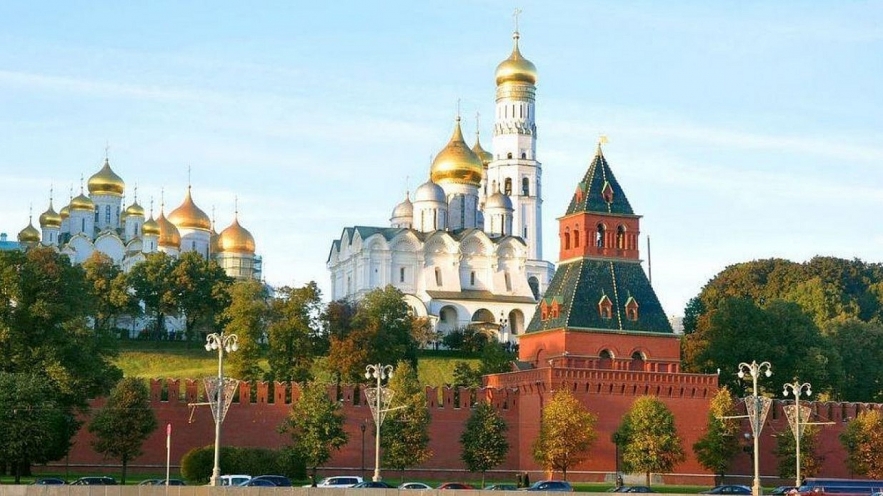 |
| What Is The Capital of Russia: History, Facts, Best Places to See. Photo: themoscowtimes. |
Throughout this time, Moscow was also experiencing a population boom, with a massive influx of peasants moving to the metropolis from rural farms in search of work. In stark contrast to the lavish architecture being built, the city was also filled with poverty-stricken slums, and increasing discontent lead to revolution.
| Population Density of Moscow Moscow has a density of 8,537.2 people per square kilometer. Moscow is run by one mayor, but the city is actually divided into 12 administrative okrugs and 123 districts, each with its own coat of arms and flags and individual heads of each area. The largest administrative okrugs include: -Southern Okrug: 1.59 million -Eastern Okrug: 1.39 million -North-Eastern Okrug: 1.24 million -Northern Okrug: 1.11 million -South-Eastern Okrug: 1.12 million |
After the 1917 October Revolution, the Bolsheviks decided to move the capital back to Moscow and in 1918, Moscow became the capital of the Soviet Union. Moscow became a thriving megalopolis during the Soviet era and today is one of the largest cities in Europe. The Moscow metro system was built — one of the most efficient and beautiful underground networks in the world, as The Moscow Times reported.
During World War II, the city again became a major battleground and a target for invading troops. Most civilians were evacuated from the city as Soviet soldiers fought the Nazis in the Battle of Moscow from October 1941 to January 1942. The defeat of the Nazis in this battle was a major turning point in the war.
After the Soviet Union collapsed in 1991, Moscow continued to serve as the capital,this time of a new entity, the Russian Federation. Today Moscow is an extremely diverse city, where ancient neighborhoods are interspersed with newly built high-rises, inhabited by people from all over the former Soviet Union.
Best Places to See in Moscow
As a vibrant capital and Europe’s largest city, Moscow is a powerful mix of history and edginess, full of world-famous sites. A trip to the capital wouldn't be complete without seeing the following attractions:
St Basil's Cathedral
However long you’re visiting Moscow for, you must set aside some time to soak up the archetypal image of Russia’s capital with the glistening rainbow roofs of St Basil’s Cathedral. The onion-shaped domes were designed to make the building look like flames on a bonfire. According to theculturetrip, the cathedral was commissioned in the 1500s by Ivan the Terrible and according to legend, the Tsar thought it so beautiful he ordered that the architect be blinded so they would never surpass this creation.
Lenin's Mausoleum
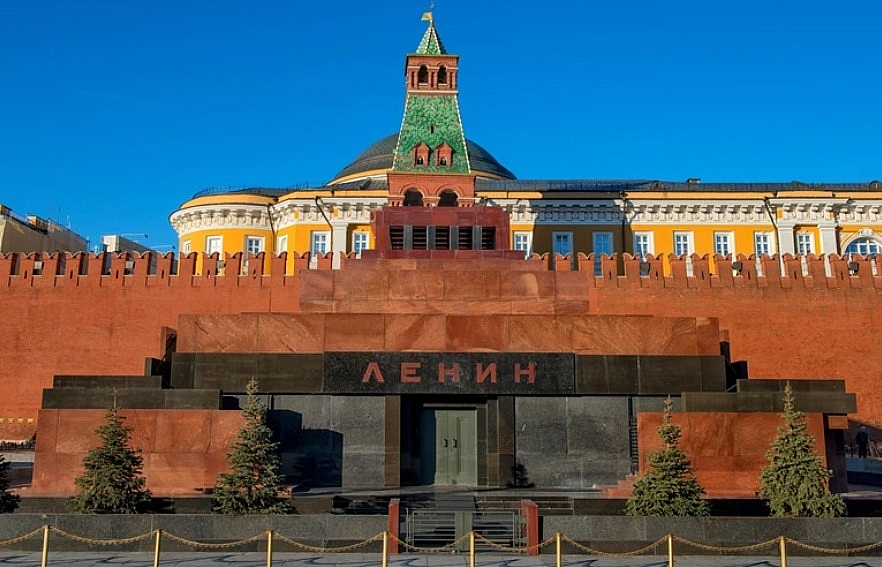 |
| Lenin's Mausoleum | © Ivan Batinic / Alamy Stock Photo |
Memorial Museum Of Cosmonautics
Striking, unique, and aiming to touch the sky, the Memorial Museum of Cosmonautics is one of the best Moscow tourist sites which the travelers cannot afford to miss. Educating the visitors about the significant part of Russia’s history in the domain of space, it is a strict no-no to miss out on visiting the Museum of Cosmonautics when in the city, as traveltriangle.com reported.
Location: Prospekt Mira, 111, Moskva, Russia, 129223
Timings: Thursdays & Saturdays – 10 AM to 9 PM; Tuesdays, Wednesdays, Fridays, & Sundays – 10 AM to 7 PM; Closed on Mondays
Kremlin
According to planetware, Moscow's most recognizable structure is without a doubt the Kremlin, a 15th-century fortified complex that covers an area of 275,000 square meters surrounded by walls built in the 1400s. The Grand Kremlin Palace-which has over 700 rooms-was once home to the Tsar family and is now the official residence of the president of the Russian Federation, although most heads of state choose to reside elsewhere.
The massive complex also includes many other buildings, some of which are open to the public and can be visited regularly. Aside from three cathedrals (including one where the Tsars were once crowned) and a number of towers, the Kremlin is also home to the Armory building, a museum holding everything from the royal crown and imperial carriages to the ivory throne of Ivan the Terrible and Fabergé eggs.
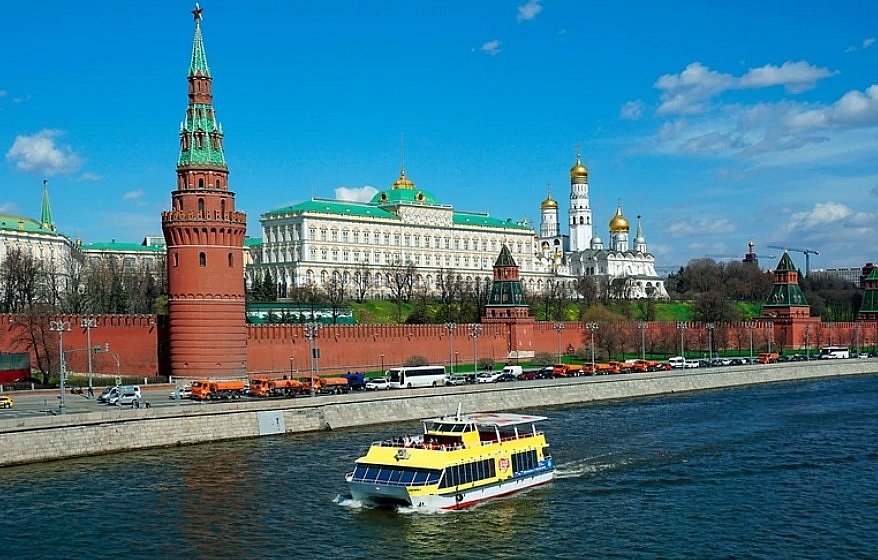 |
| Moscow Kremlin | © imageBROKER / Alamy Stock Photo |
Red Square
All of Moscow's main streets start at Red Square, so it's easy to see why this is considered the heart of the city. A massive space of 330 meters by 70 meters, the square is flanked by the Kremlin, Lenin's Mausoleum, two cathedrals, and the State Historical Museum. In 1945, a massive Victory Parade was held here to celebrate the defeat of Nazi Germany by the Soviet Armed Forces.
St. Basil's Cathedral, one of the most recognizable buildings on the square, was built in 1555. The unique cathedral has architectural details inspired by Byzantine and Asian design, as well as details that resemble those found in famous mosques. There are nine individual chapels inside the church, all decorated with colorful mural art.
Both the square itself and the Kremlin are recognized as UNESCO World Heritage Sites. On weekends, there are sometimes stalls selling souvenirs and traditional items here, such as matryoshka (Russian nesting dolls), at the entrance of the square.
Kolomenskoye
Once a royal estate, as touropia reported, Kolomenskoye is now a museum-reserve and lies a few kilometers outside of the city center. A captivating place to visit, there is a plethora of history on show and the site overlooks the Moskva River.
Consisting of four historical sites, there are extensive gardens for visitors to explore, as well as loads of interesting old buildings, the former village of Kolomenskoye itself and the impressive Palace of the Tsar Alexey Mikhailovich – once considered the Eighth Wonder of the World by contemporaries.
Among the many stunning sights, it is the brilliantly white Ascension Church that is the undoubted highlight – dating back to 1532.
Tretyakov Gallery
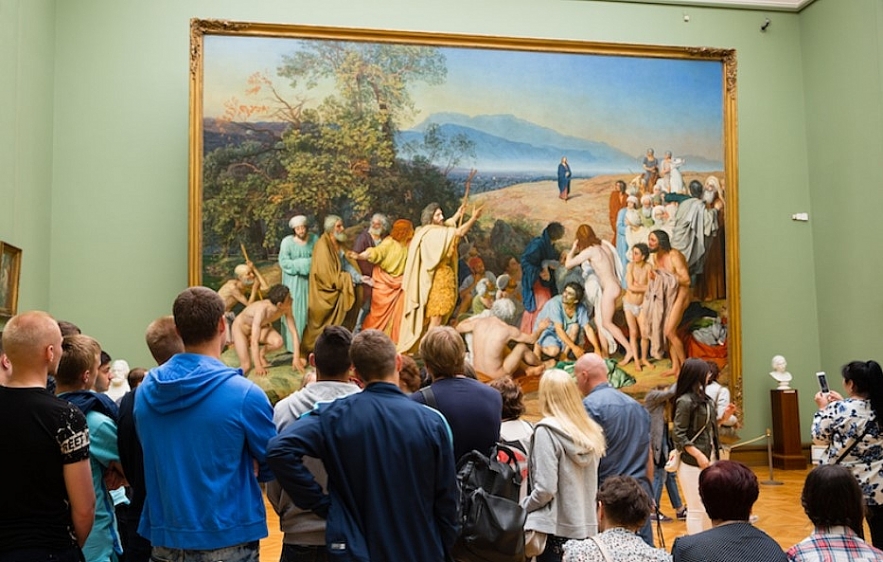 |
| Photo: touropia.com. |
Home to the most extensive and impressive collection of Russian fine art in the world, the State Tretyakov Gallery is definitely worth visiting when in Moscow for the wealth of amazing art pieces that it has on display.
Having started out as the private art collection of the Tretyakov brothers, there are now over 130,000 exhibits. Highlights include the iconic Theotokos of Vladimir which you will almost certainly recognise despite probably not knowing the name and Rublev’s Trinity which is considered to be one of highest achievements in Russian art.
An absolute must for art lovers, the State Tretyakov Gallery will delight visitors with all that is has to offer.
Museum of Cosmonautics
At one point, Russia and the US were toe-to-toe when it came to space exploration. While that might no longer be the case, the museum's amazing collection-which includes over 85,000 items-is still awe-inspiring.
Main exhibits include the space capsule used by Yuri Gagarin, the first human to travel into outer space; a USSR flag with moon fragments; a Soviet spacesuit; and a rocket propulsion unit from the 1960s. A special two-story hall showcases sections of the Mir space station interior, and there are also models of the first sputniks and a replica miniature spaceship.
English-language tours are available, and there's also a Cinema Hall showing subtitled short films about the history of space exploration programs and the first manned space flight.
The museum is located inside the base of the monument to the Conquerors of Space, which was built almost 20 years before the museum opened.
Tsaritsyno Palace
Once the summer residence of Catherine the Great, the stunning Tsaritsyno Palace is now a museum-reserve. The architecture is magnificent and there is a lovely park surrounding it for visitors to explore.
Located in the south of Moscow, the palace was commissioned in 1775 and recent renovations mean its lavish interior looks better than ever before with its elegant halls and beautiful staircases.
The exhibits on display look at the life of the empress as well as the history of Tsaritsyno itself. The huge palace grounds are also home to some other delightful buildings with the elegant opera house and wonderful brickwork of the Small Palace being particularly impressive to gaze upon.
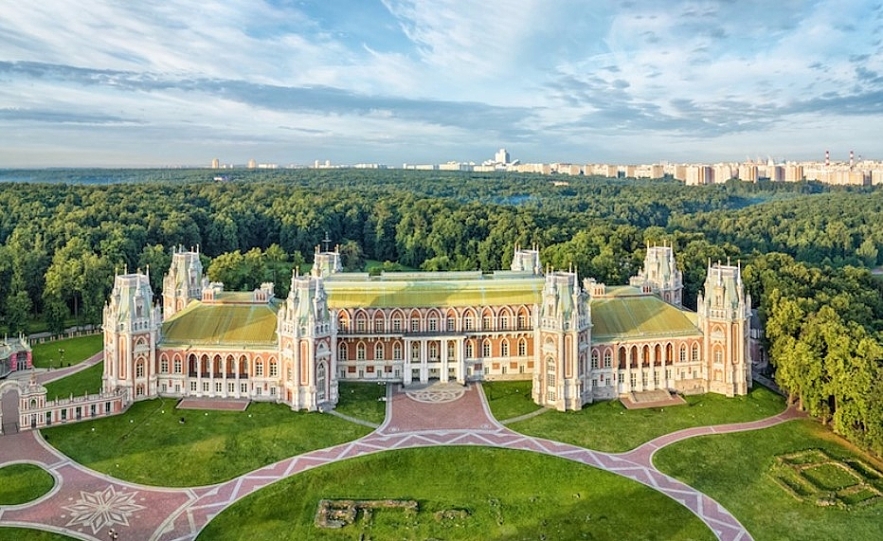 |
| Photo: touropia.com. |
Bolshoi Theatre
The Bolshoi Theater is home to the largest and one of the oldest ballet and opera companies in the world. While the theater has undergone several major renovations over the past century-including a recent one in 2011 to restore some of the imperial architectural details-it still retains all of its Neoclassical grandeur.
The Bolshoi Theater you see today opened in 1824, after several older versions burned down. Inside, red velvet, a three-tiered crystal chandelier, and gilt moldings give the place a Byzantine-Renassaince grandiose feel like no other.
Catching a show from the resident ballet and opera troupes is a treat, as the theater often presents a number of classic performances, such as Tchaikovsky's Mazeppa and Rachmaninoff's Francesca da Rimini, both of which originally premiered here.
Interesting Facts about Moscow
There Is An Underground River In Moscow
According to expertworldtravel, the Neglinnaya River flowed through the Russian capital for centuries undisturbed but no one could live on the western side of its banks as it flooded every year. Russian engineering then took over and they diverted the river into an underground tunnel which now flows under Neglinnaya Street into the Moskva river and then built on the old river that is now dry.
 |
| Photo: expertworldtravel.com. |
Lenin’s corpse is preserved in a Mausoleum in Moscow’s Red Square
According to theculturetrip, Vladimir Lenin died in 1924 and, since then, the maintenance of hiss remains has cost the Russian state roughly 13 million roubles (over £155,000/$210,000) per annum. Every few days, a team of scientists check on his body to monitor the condition of his skin and keep it looking natural. His body, except his organs, is re-embalmed every 18 months. Every once in a while, the scientists replace damaged tissue with artificial material to keep everything working. Many people speculate that the body isn’t real at all. The best way to tell is to see for yourself.
The Largest Bell In The World Is In Moscow
The Tsar Bell we know today weighs 200 tonnes and it has never been rung, but this is the third version of this huge bell. The first was 18 tonnes and required 24 men just to make it ring but it was then broken into pieces during a fire. The same thing happened to Tsar Bell version 2, and then came version 3 which was buried after another fire and took 40 years to get out.
The Highest Monument In Moscow
The highest monument in Moscow is the Victory Obelisk. It’s a huge 141.8 meters tall and was built in May 1995 as a representation of the Great Patriotic War. Every 10 cm of the Victory Obelisk represents a single fay of the war.
Moscow’s stray dogs can navigate the metro
To survive the city’s harsh winters, Moscow’s dogs have had to develop street smarts. While exploring the city’s beautiful metro system, you might spot one of its clever canine residents hopping on and off the trains. They have learnt to identify metro stops by the tannoy announcements, while others have befriended security guards. And, like St Petersburg’s cats, they keep the rat population down.
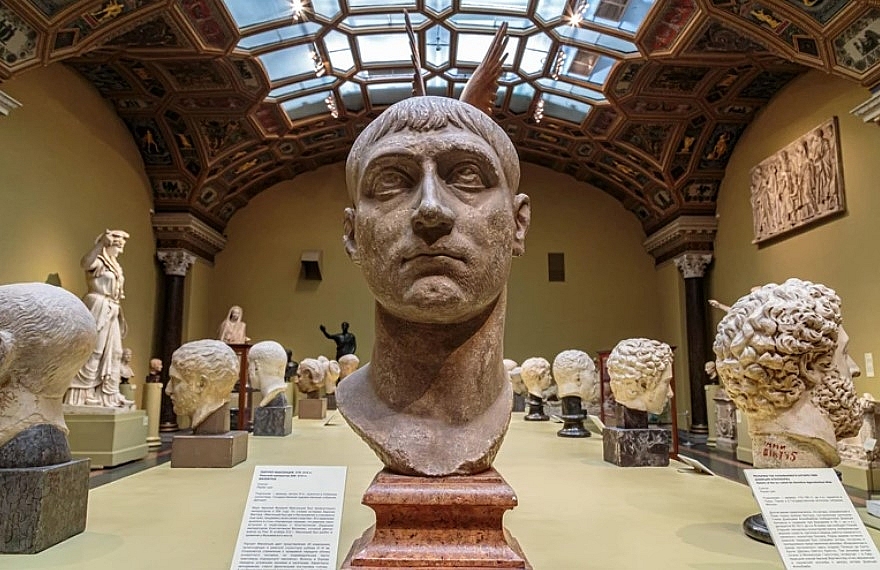 |
| Pushkin Museum of Fine Arts | © Ruslan Gilmanshin / Alamy Stock Photo |
Yuri Gagarin, the first man in space, is buried at the Kremlin Wall in Moscow
Even before his spaceflight, Yuri Gagarin was greatly admired. When 20 of his peers in the Soviet Space Programme were asked to anonymously vote on who should be the first man sent to space, all but three said Gagarin. Soon after his orbit around earth, his fame skyrocketed. Sadly, he became too valuable to ever return to the skies; a realisation which later led to his deepening depression. He returned to work as a fighter pilot and eventually died on a routine training mission. Since his death, his short but extraordinary life has been commemorated in a number of ways. Buzz Aldrin and Neil Armstrong left medals awarded to the Soviet space explorer on the surface of the moon. His home town has been renamed Gagarin and so has a crater on the far side of the moon. His ashes have been buried at the Kremlin Wall Necropolis, where astronauts of all nationalities come to lay flowers before their own space flight.
Moscow Has Burned Down A Lot
The city of Moscow has burned down countless times. All the houses in Moscow used to be built from wood and thus the city burned to its knees quite easily and has been rebuilt several times. These were the fires that burned down the Tsar Bells.
| Frequently Asked Questions about Moscow Where to start? If you're going to travel to Moscow and you don't know much about the city yet, the first thing to do is to dive into its legendary history - understanding the past will help you understand the present. Next, check out our practical hints and tips on travelling to the city, before discovering which of its most important museums, monuments and attractions pique your interest. How are the sidewalks? According to Russia Beyond, there are convenient and wide pedestrian walkways in both the city center and in the suburbs. City mayor Sergei Sobyanin has tortured Muscovites for several summers in a row with massive renovations, but now residents (except probably car drivers) are happy with the improvements. Most of the city is paved with asphalt or covered by street bricks, but medieval cobblestones are still common, such as inside the Kremlin walls and on Red Square. So, be careful with your choice of shoes. Is it easy to use the metro? All of the Moscow metro stations are also announced in English, andthe mapis translated as well. In most cases, the metro is your quickest option to get from point A to point B. With millions of locals using it daily, however, be ready for human traffic jams. Try to avoid traveling on the metro from 7-10 a.m. and 5-7 p.m. What about other public transportation?Buses and trams can sometimes be quicker if you need to get somewhere far from the metro (this is rare). You can check the routes and plan your route in advance by checking this site: msk.rusavtobus.ru. Is it safe to bike in Moscow?Moscow has more and more bike lanes and not only in the city center. Though both car drivers and pedestrians aren’t used to the cyclist culture yet, don’t get mad if you meet a woman with a baby stroller or lovers holding hands who are directly in your lane. There are many cyclists driving on main roads without special lanes, but if it’s not prohibited with signs, go ahead but be extra careful. |
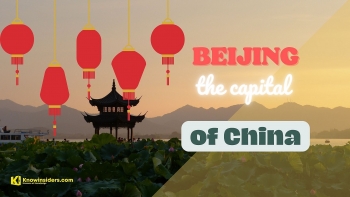 What Is the Capital of China: History, Facts and Best Places to See What Is the Capital of China: History, Facts and Best Places to See Beijing is the capital city of China and is known for its rich history and modern architecture. We rounded up all things you need to ... |
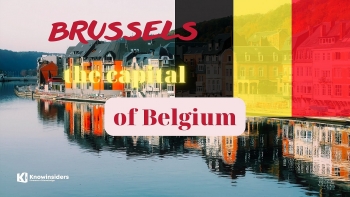 What Is The Capital of Belgium: History, Facts, Best Places to See What Is The Capital of Belgium: History, Facts, Best Places to See The capital of Belgium has a rich history and plays an important role in Europe, and the world. We rounded up all things you need ... |
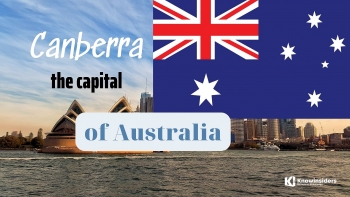 What Is The Capital of Australia: History, Best Places to See and Facts What Is The Capital of Australia: History, Best Places to See and Facts Australia is one of those funny countries with a capital city that is not very well known or densely populated. We rounded up all things ... |

